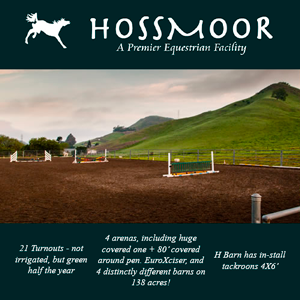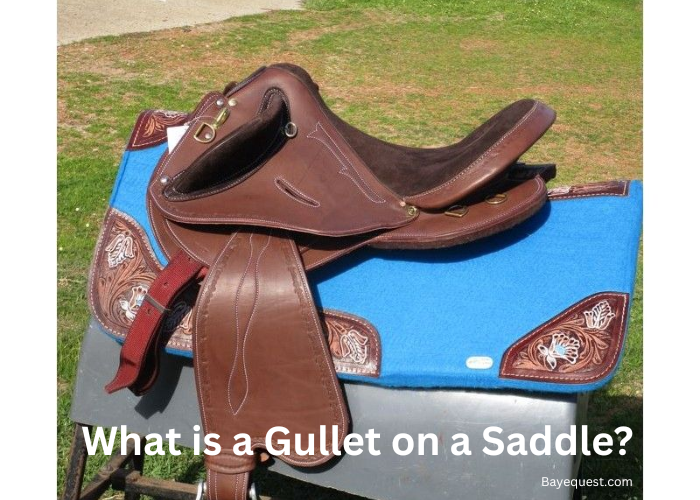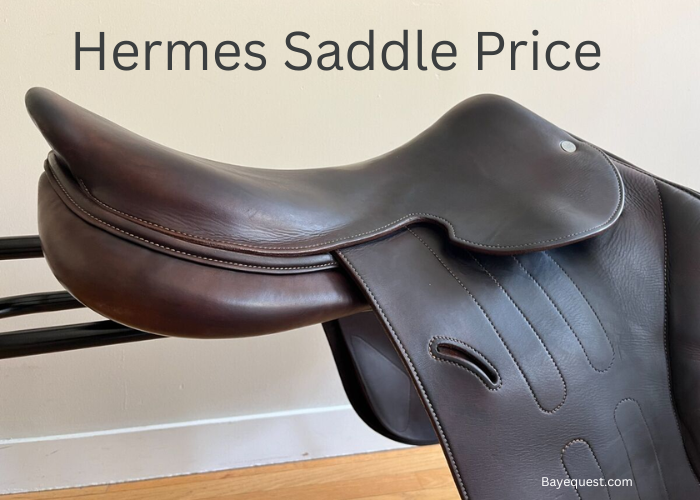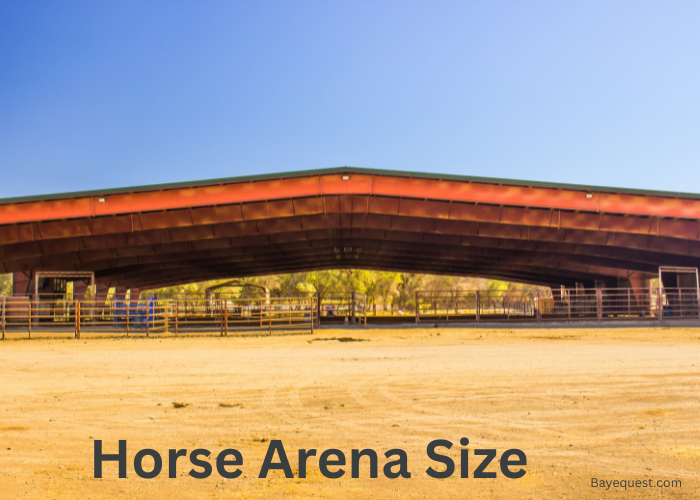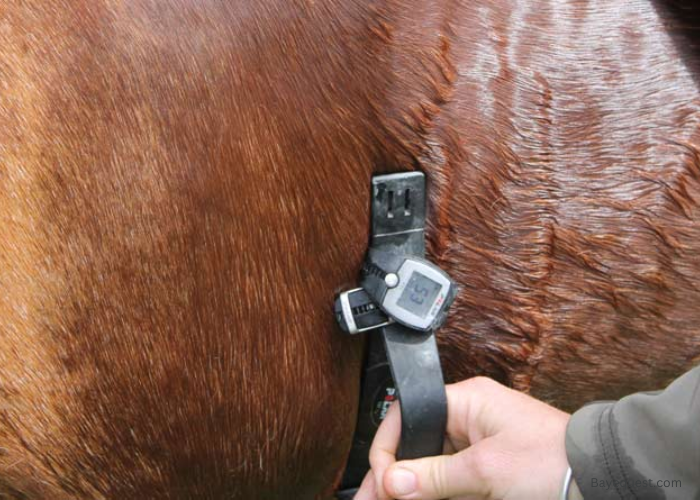Saddles can look the same to the untrained eye. But one hidden part makes a big difference; the gullet.
It’s not just a fancy word. It plays a major role in how your saddle fits and how your horse feels.
Get it wrong, and your horse could be in pain. Get it right, and you’ll both ride better.
So, what exactly is a gullet? Where is it, and why should you care?
Let’s break it down in simple terms. No saddle-fitting jargon, just the facts you actually need.
What is a Gullet on a Saddle? Key Takeaway
The gullet on a saddle is the open space under the pommel. It runs along the center, above the horse’s spine and withers. This space prevents direct pressure on the backbone. Gullet size affects saddle fit, balance, and your horse’s comfort during movement, especially across the shoulders and spine.
What is a Gullet?
The gullet is the tunnel-like space that runs down the center of the saddle, just underneath the seat. It sits over your horse’s spine and withers.
Its main job is to make sure the saddle doesn’t press directly on the spine. A good gullet gives your horse enough clearance, so there’s no rubbing, pressure, or pain.
It is the space that protects your horse’s backbone. It’s a small part of the saddle, but it has a big impact on comfort, balance, and movement.
What is Gullet Width?
Gullet width is the measurement across the inside of the gullet, from one side of the saddle tree to the other. It tells you how much space the saddle gives your horse’s spine and withers.
A narrow gullet sits closer together, while a wide gullet gives more room. The right width depends on your horse’s build.
If it’s too narrow, it can pinch the withers. If it’s too wide, the saddle might rest on the spine.
Either way, the wrong gullet width can cause pain and lead to serious riding problems.
What Does the Gullet on the Saddle Do?
The gullet keeps the saddle off your horse’s spine. It creates a safe space down the center, so there’s no pressure on the bones or nerves along the back.
When the gullet fits right, your horse can move freely and stay comfortable. It also helps spread the rider’s weight evenly across the muscles and not the spine.
Without that space, your horse might feel sore, stiff, or even refuse to move. In short, the gullet protects your horse and keeps your rides smooth.
How Do You Measure Gullet Size on a Saddle?
Measuring the gullet size is a key step in making sure your saddle fits your horse. Here’s a simple way to check the gullet width before you saddle up.
Step 1: Stand the saddle upright. Place it on a stand or flat surface with the pommel (front) facing you.
Step 2: Find the gullet area. Look under the pommel, between the saddle’s front panels. That open space is the gullet.
Step 3: Use a ruler or tape measure. Measure straight across the front of the gullet, from the inside edge of one panel to the inside edge of the other.
Step 4: Note the width. Record the width in inches or centimeters. Most English saddles fall between 4.5″ and 6.5″ wide.
Step 5: Match the size to common terms. Check if the measurement fits a standard size:
- 4.5″ = Narrow
- 5″ = Medium
- 5.5″ = Wide
- 6″+ = Extra Wide
Step 6: Always double-check on the horse. Even if the size looks right, place the saddle on your horse to be sure. You want 2–3 fingers of clearance above the withers and no pinching.
How to Measure Western Gullet Saddle
Western saddle gullets are measured a bit differently from English saddles. The goal is still the same, making sure your horse’s spine has enough clearance.
Here’s how to check the gullet size on a Western saddle.
Step 1: Set the saddle upright. Place the saddle on a stand or flat surface with the front (pommel) facing you.
Step 2: Locate the gullet. The gullet is the open space just under the fork (the wide front part of the saddle).
Step 3: Find the concho screws. Look for the conchos—small decorative screws on each side of the saddle fork. The gullet is measured between the insides of the bars at the concho level.
Step 4: Use a ruler or tape measure. Measure straight across from one concho screw to the other. Don’t curve the tape—go in a straight line.
Step 5: Match the width to common sizes
- 5” to 5.5” = Semi-Quarter Horse Bars (narrower horses)
- 6” to 6.5” = Full Quarter Horse Bars (average to wide horses)
- 7” or more = Extra-Wide or Draft Horse Bars
Step 6: Check on the horse. Even if the size seems right, always test it on your horse. You want enough wither clearance and no tight pressure points.
How to Measure English Gullet Saddle
Step 1: Place the saddle upright. Set the saddle on a saddle stand or flat surface, pommel facing you.
Step 2: Locate the gullet. The gullet is the space between the panels under the pommel, running down the center of the saddle.
Step 3: Use a ruler or tape measure. At the front of the saddle, measure the distance between the insides of the saddle tree points—right where the panels begin under the pommel.
Step 4: Take the measurement. Hold the ruler straight across. Don’t include the padding—just measure the tree width between the two panels.
Step 5: Match the width to common sizes
- 4”–4.5” = Narrow
- 5” = Medium
- 5.5” = Wide
- 6”+ = Extra Wide
Step 6: Double-check on the horse. Place the saddle on your horse’s back. There should be about two to three fingers of clearance over the withers, and no tight spots on the sides.
Saddle Gullet Size Chart
| Gullet Width | English Saddle Fit | Western Saddle Fit | Horse Type |
| 4″ – 4.5″ | Narrow | Pony Bars / Semi-QH Bars (narrow) | Narrow withers (Thoroughbreds, Arabians) |
| 5″ | Medium | Semi-Quarter Horse Bars | Average build |
| 5.5″ | Wide | Full Quarter Horse Bars | Broad shoulders / wider withers |
| 6″ | Extra wide | Full QH Bars / Wide | Stocky breeds (Paints, some Warmbloods) |
| 6.5″ – 7″ | XX-Wide or Custom Fit | Draft Bars / Extra-Wide | Draft horses or very wide-backed horses |
Gullet Size vs Saddle Tree Size
Gullet size refers to the open space under the front of the saddle, just below the pommel. It’s the part that sits over your horse’s withers and spine.
The gullet’s main job is to provide clearance and protect the spine from direct pressure. It plays a big role in your horse’s comfort, especially during movement.
Saddle tree size, on the other hand, refers to the entire internal framework of the saddle. This includes the front, sides, and length of the tree.
It determines how the saddle distributes your weight across your horse’s back and whether it sits level and stable. Tree size affects the seat width, bar angle, and overall fit.
While gullet size is one part of the saddle tree, the two are not the same. You can’t judge the whole saddle fit just by measuring the gullet.
For example, a wide gullet doesn’t always mean the tree is wide enough for your horse’s shoulders or back shape.
Some saddles come with interchangeable gullets, which allow you to adjust the width under the pommel.
However, saddle tree size is usually fixed and can’t be changed without professional work. That’s why you need to consider both when fitting a saddle.
Gullet vs Channel: What’s the Difference?
The gullet and the channel are often confused, but they’re not the same thing.
The gullet is the front part of the saddle. It’s the space under the pommel that sits over your horse’s withers and spine. Its job is to provide clearance and protect the top of the spine.
The channel runs all the way down the middle of the saddle, from front to back. It’s the space between the two panels underneath.
The channel protects the full length of your horse’s spine and should never press down or pinch.
The gullet protects the front while the channel protects the rest of the spine.
Both matter. And both must fit well for your horse to stay happy and pain-free.
Signs of a Poorly Fitting Gullet
A gullet that doesn’t fit right can cause serious problems for your horse. Here’s what to watch for:
Sore or swollen withers – Check for any tenderness, heat, or swelling after rides.
Dry spots under the saddle – Uneven sweat marks can mean uneven pressure.
Behavior changes – Bucking, rearing, refusing to move, or general irritability could all be pain signals.
Stiff or short strides – Your horse may not want to stretch or move freely.
Visible pressure marks – Red spots or hair loss where the saddle sits.
Difficulty saddling – If your horse flinches, moves away, or pins its ears when you saddle up, it might be in pain.
FAQs
Are interchangeable gullets better than fixed ones?
Interchangeable gullets offer flexibility for horses that change shape or riders with multiple horses. They’re convenient and cost-effective. Fixed gullets, however, can provide a more stable fit for one horse. The better choice depends on your needs.
What if I have a saddle without an interchangeable gullet?
If your saddle lacks an interchangeable gullet, check the fit carefully. Use a saddle fitter to adjust with pads or shims if needed. Ensure proper spine clearance and no pressure points. If the fit is poor, consider reflocking or replacing the saddle to protect your horse’s comfort.
Do all saddles have a gullet?
No. Not all saddles have a gullet. Most English and Western saddles have a built-in gullet to protect the horse’s spine. But treeless saddles and bareback pads often don’t. These designs lack a defined gullet space, which can reduce spinal clearance and protection.
Conclusion
The gullet may seem like a small part of the saddle, but it does a big job. It protects your horse’s spine and helps the saddle sit correctly.
If the gullet doesn’t fit, your horse will feel it. That can lead to pain, poor movement, and behavior issues.
Whether you ride for fun or competition, a well-fitted gullet makes every ride better. Always check for proper clearance and balance.
When in doubt, ask a saddle fitter. A comfortable horse is a happy horse, and that makes all the difference.



